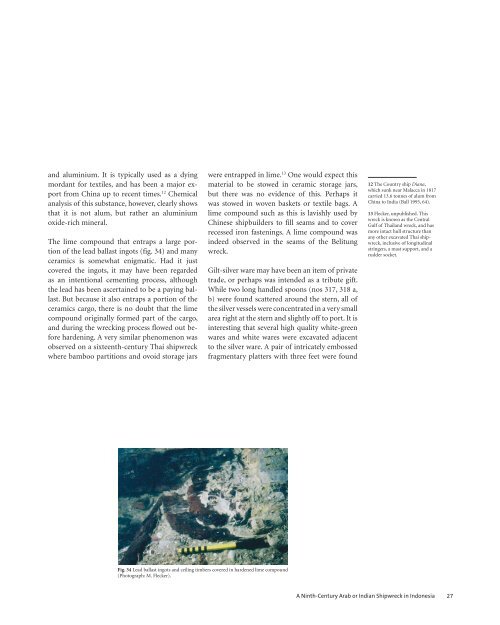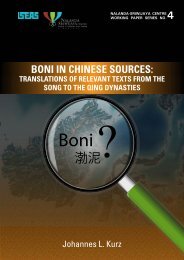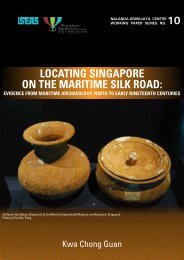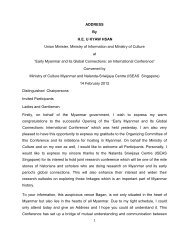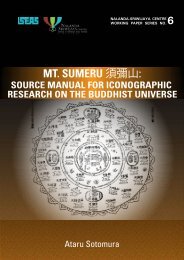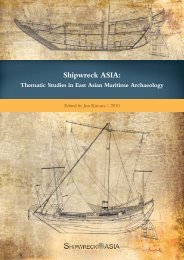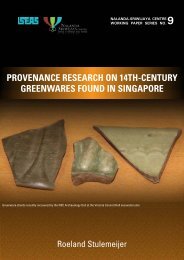Create successful ePaper yourself
Turn your PDF publications into a flip-book with our unique Google optimized e-Paper software.
and aluminium. It is typically used as a dying<br />
mordant for textiles, and has been a major export<br />
from China up to recent times. 12 Chemical<br />
analysis of this substance, however, clearly shows<br />
that it is not alum, but rather an aluminium<br />
oxide-rich mineral.<br />
The lime compound that entraps a large portion<br />
of the lead ballast ingots (fig. 34) and many<br />
ceramics is somewhat enigmatic. Had it just<br />
covered the ingots, it may have been regarded<br />
as an intentional cementing process, although<br />
the lead has been ascertained to be a paying ballast.<br />
But because it also entraps a portion of the<br />
ceramics cargo, there is no doubt that the lime<br />
compound originally formed part of the cargo,<br />
and during the wrecking process flowed out before<br />
hardening. A very similar phenomenon was<br />
observed on a sixteenth-century Thai shipwreck<br />
where bamboo partitions and ovoid storage jars<br />
were entrapped in lime. 13 One would expect this<br />
material to be stowed in ceramic storage jars,<br />
but there was no evidence of this. Perhaps it<br />
was stowed in woven baskets or textile bags. A<br />
lime compound such as this is lavishly used by<br />
Chinese shipbuilders to fill seams and to cover<br />
recessed iron fastenings. A lime compound was<br />
indeed observed in the seams of the Belitung<br />
wreck.<br />
Gilt- silver ware may have been an item of private<br />
trade, or perhaps was intended as a tribute gift.<br />
While two long handled spoons (nos 317, 318 a,<br />
b) were found scattered around the stern, all of<br />
the silver vessels were concentrated in a very small<br />
area right at the stern and slightly off to port. It is<br />
interesting that several high quality white-green<br />
wares and white wares were exca vated adjacent<br />
to the silver ware. A pair of intricately embossed<br />
fragmentary platters with three feet were found<br />
12 The Country ship Diana,<br />
which sunk near Malacca in 1817<br />
carried 13.6 tonnes of alum from<br />
China to India (Ball 1995, 64).<br />
13 <strong>Flecker</strong>, unpublished. This<br />
wreck is known as the Central<br />
Gulf of Thailand wreck, and has<br />
more intact hull structure than<br />
any other excavated Thai shipwreck,<br />
inclusive of longitudinal<br />
stringers, a mast support, and a<br />
rudder socket.<br />
Fig. 34 Lead ballast ingots and ceiling timbers covered in hardened lime compound<br />
(Photograph: M. <strong>Flecker</strong>).<br />
A Ninth-Century Arab or Indian Shipwreck in Indonesia 27


